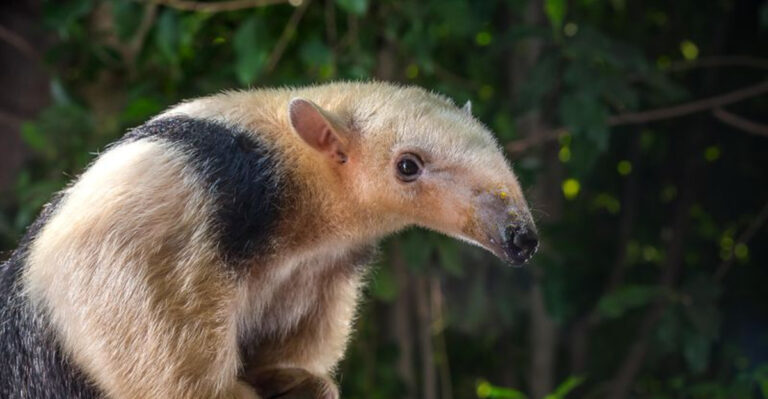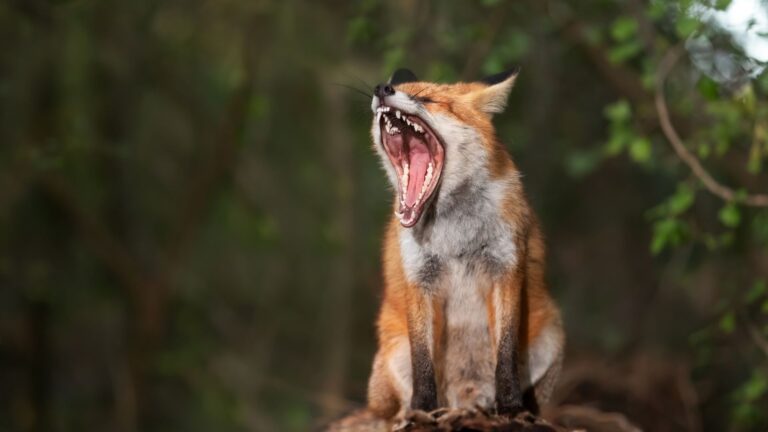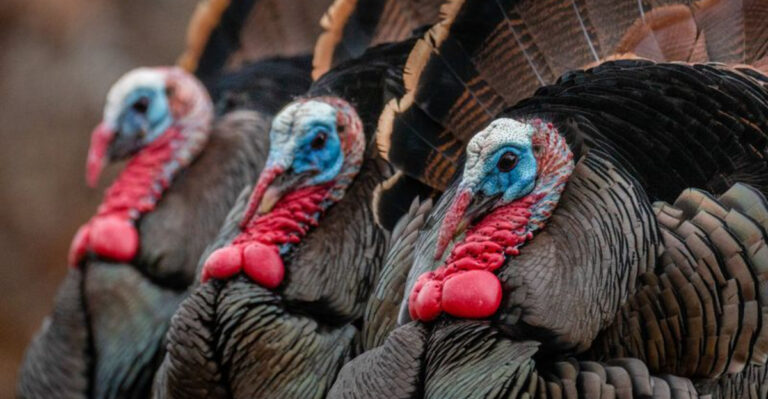12 Snakes That Are Known To Chase Humans And What Drives Them to Do It
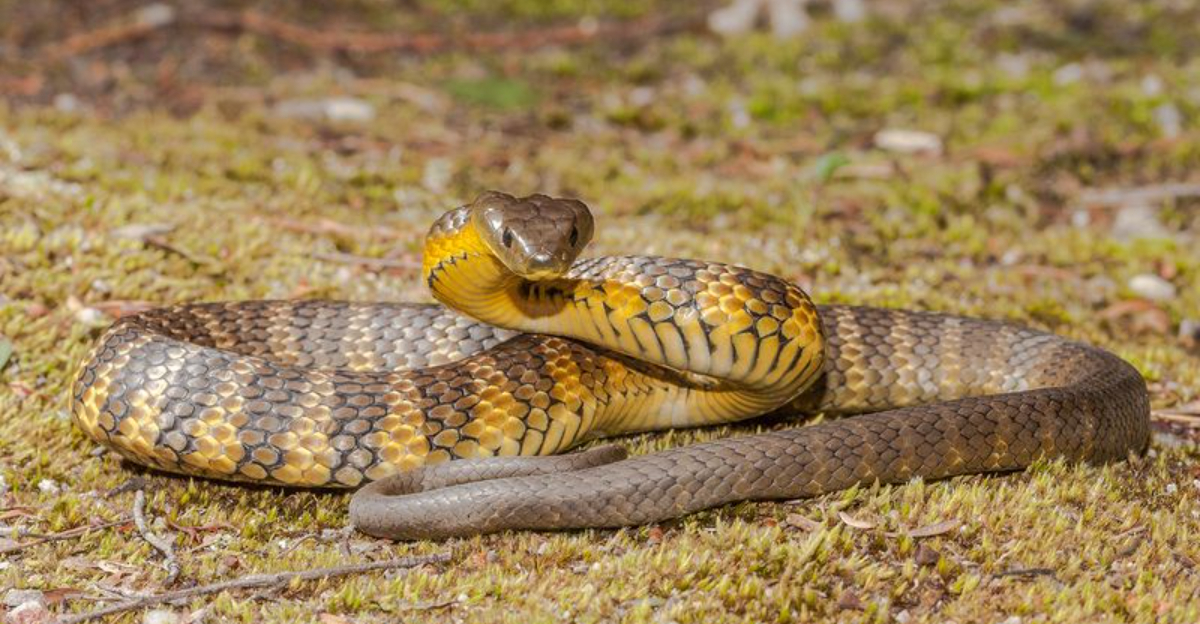
Snakes slithering after humans sounds like something from a nightmare, but it’s a real occurrence with certain species. Most snakes prefer to avoid people, but some will actively pursue us under specific circumstances.
Understanding why these serpents chase humans can help you stay calm and safe during an encounter. Let’s explore 12 snakes known to chase people and the fascinating reasons behind this unnerving behavior.
1. Black Mamba – The Speed Demon
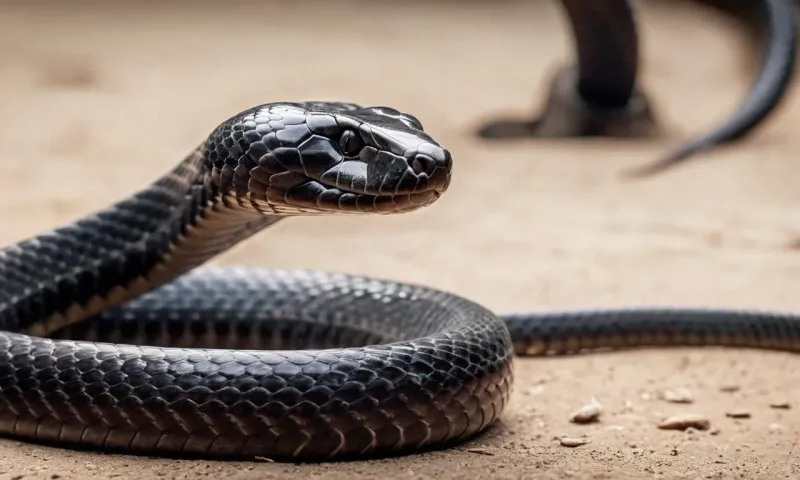
Africa’s legendary Black Mamba doesn’t just wait for trouble – it brings the fight to you at speeds up to 12 mph. When cornered or threatened, this snake will advance rather than retreat, creating the impression it’s chasing you.
Their aggressive reputation comes from defending territory, not hunting humans. If a mamba feels trapped between you and its hiding place, it may charge toward you to reach safety.
Black Mambas are extremely nervous snakes with lightning-fast reflexes. A female guarding eggs or a male during mating season is particularly likely to pursue perceived threats across surprising distances.
2. King Cobra – The Protective Parent

Reaching lengths of 18 feet, the King Cobra becomes surprisingly mobile when defending its nest. Unlike most snakes, King Cobras are dedicated parents who build nests and guard their eggs fiercely.
During breeding season, these normally reserved serpents transform into territorial guardians. Females have been documented chasing intruders up to 100 yards from their nesting sites.
King Cobras possess remarkable intelligence compared to other snakes. They can recognize individual humans who repeatedly enter their territory, becoming increasingly aggressive toward specific people they view as persistent threats.
3. Eastern Brown Snake – The Nervous Reactor
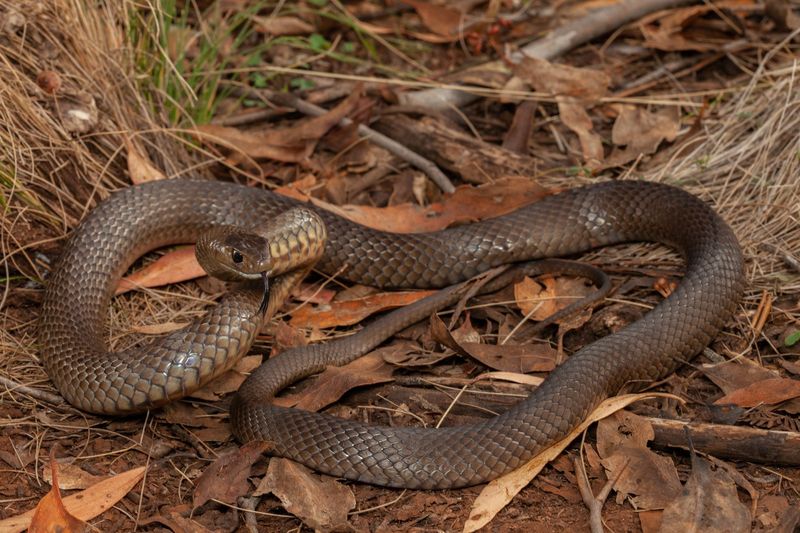
Don’t let its plain appearance fool you. Australia’s Eastern Brown Snake possesses both deadly venom and a hair-trigger temperament. These snakes react explosively to sudden movements, sometimes charging toward the source of disturbance.
Their pursuit behavior stems from a unique defensive strategy. By rushing at threats, they create confusion and opportunity to escape in another direction.
Eastern Browns have exceptional vision for snakes. They detect movement from surprising distances, making them appear to single out humans walking through their habitat. Their speed and agility allow them to maintain pursuit across varied terrain, creating frightening encounters for hikers.
4. Inland Taipan – The Deliberate Hunter

Known as the world’s most venomous land snake, the Inland Taipan rarely encounters humans in its remote Australian habitat. When it does, this calculating predator may pursue a perceived threat with unnerving purpose.
Unlike reactive snakes, Taipans assess situations methodically. Their pursuit isn’t panicked – it’s strategic. They maintain visual contact with targets while positioning for the perfect strike.
Inland Taipans have specialized neurotoxic venom evolved for hunting warm-blooded prey. This may explain why they sometimes follow humans who enter their territory, as our heat signatures trigger predatory responses normally reserved for their mammalian prey.
5. Bushmaster – The Midnight Tracker
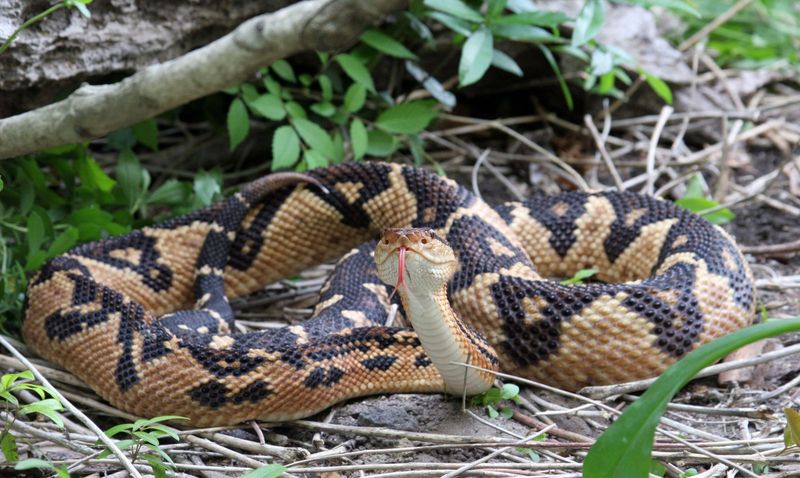
Lurking in Central and South American rainforests, the massive Bushmaster can exceed 10 feet and displays unsettling pursuit behavior. These nocturnal hunters have heat-sensitive pits that allow them to track warm-blooded creatures in complete darkness.
Bushmasters sometimes follow humans who disturb their territory at night. Their pursuit isn’t necessarily aggressive – they’re investigating the unfamiliar heat signature moving through their hunting grounds.
Local indigenous peoples call this snake the “silent death” because of its stealthy movement. A Bushmaster can track a person for surprising distances without being detected, creating the eerie sensation of being stalked through the jungle.
6. Cottonmouth – The Territorial Water Guardian
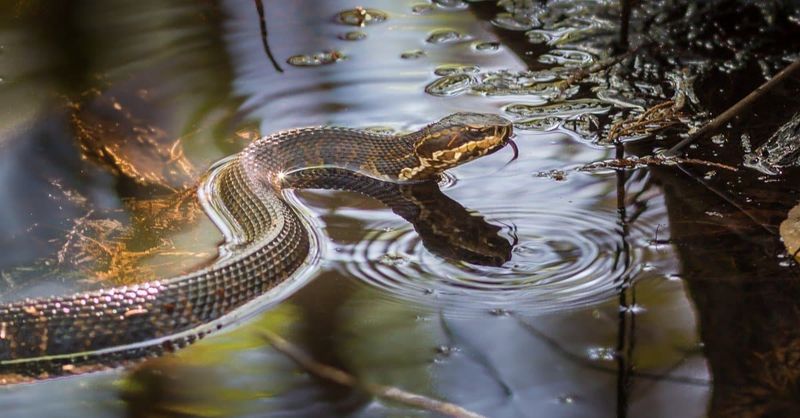
Floating ominously in Southern U.S. waterways, Cottonmouths display some of the most aggressive territorial behavior among North American snakes. These water-loving pit vipers don’t just defend their space – they actively patrol it.
Kayakers and swimmers report Cottonmouths swimming directly toward them with their distinctive white-mouthed threat display. This isn’t random aggression but a coordinated effort to escort intruders out of their territory.
During mating season, male Cottonmouths become particularly confrontational. They’ve been documented following people along shorelines for over 50 yards, persistently escorting the unwelcome visitor beyond what they consider their domain.
7. Cape Cobra – The Curious Investigator
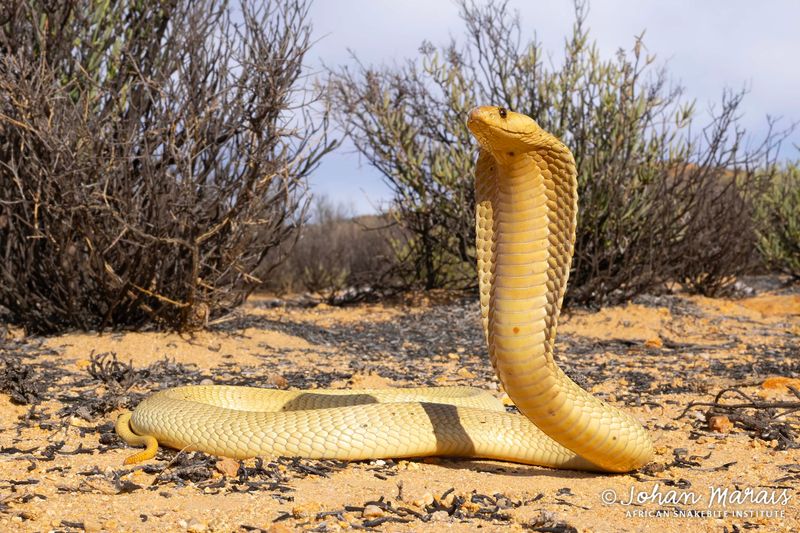
South Africa’s Cape Cobra exhibits an unusual behavioral trait – genuine curiosity about human activity. Unlike purely defensive pursuers, these intelligent snakes sometimes follow people to investigate unusual movements or unfamiliar objects.
Their pursuit often involves a series of short advances and pauses. They’re gathering information rather than launching an attack. This stop-and-go approach creates the unnerving impression they’re stalking you.
Cape Cobras have excellent memory for a snake. They learn patterns in their environment and investigate changes, which explains why they sometimes follow humans who alter familiar settings. Their neurotoxic venom makes this inquisitive nature particularly dangerous for unsuspecting people.
8. Eastern Diamondback Rattlesnake – The Persistent Defender
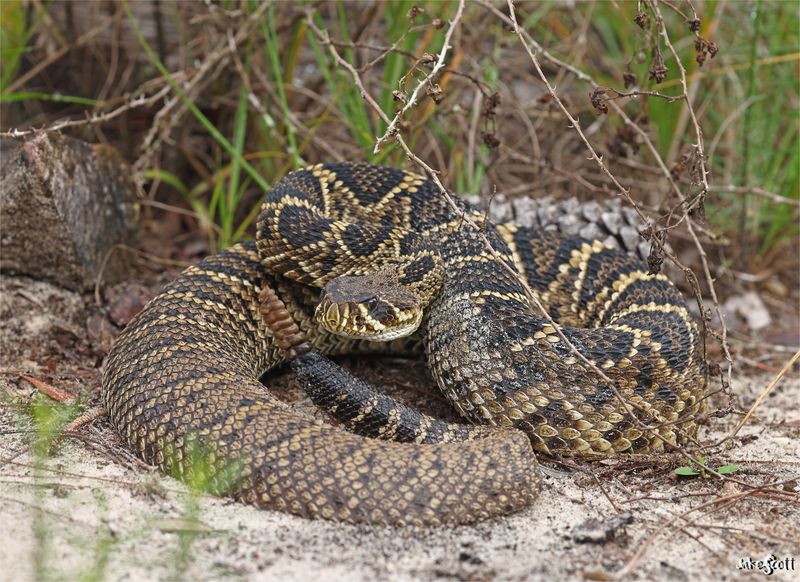
North America’s largest venomous snake brings a surprising determination to territorial disputes. When an Eastern Diamondback perceives a threat to its sunning spot or den, it may chase the intruder rather than simply striking or retreating.
These rattlesnakes have remarkable spatial memory. They recognize and defend specific territories, sometimes pursuing humans who cross invisible boundaries they’ve established.
Unlike the warning behavior for which they’re famous, Eastern Diamondbacks sometimes pursue silently. They save their distinctive rattle for close-range confrontation, making their initial approach particularly startling for hikers who suddenly find themselves being followed by this massive pit viper.
9. Mozambique Spitting Cobra – The Preemptive Striker

Found across East Africa, the Mozambique Spitting Cobra takes defensive tactics to extremes by actively pursuing perceived threats. Unlike most snakes that chase to escape, this species advances to gain optimal position for its signature defense – accurately spitting venom up to 8 feet.
Their pursuit behavior serves a specific purpose. By controlling distance from threats, they maximize their unique venom-spraying adaptation.
Mozambique Spitting Cobras have exceptional aim, targeting the eyes of potential predators. They’ve been observed following humans while maintaining the perfect 4-8 foot range for their venom spray. This calculated pursuit makes them particularly dangerous when encountered in confined spaces like homes or outbuildings.
10. Coastal Taipan – The Lightning Attacker
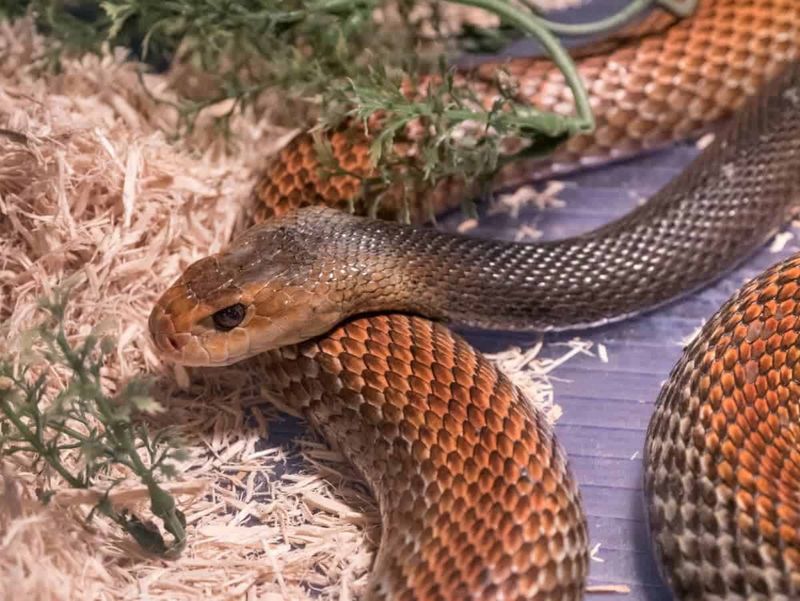
Australia’s Coastal Taipan combines extraordinary speed with aggressive temperament when cornered. Their pursuit isn’t sustained like some other species, but consists of explosive charges covering several yards in less than a second.
Coastal Taipans possess remarkable agility and can change direction mid-strike. This creates the impression of a snake that’s chasing you, when it’s actually executing a series of repositioning maneuvers.
These snakes have evolved to hunt fast-moving prey like rats. Their nervous system processes visual information extremely quickly, allowing them to track and pursue moving targets with precision. When a human triggers this hunting response, the result is one of the animal kingdom’s most frightening pursuit behaviors.
11. Western Green Mamba – The Arboreal Ambusher

Perfectly camouflaged in African forests, the Western Green Mamba creates unique pursuit scenarios by following threats from above. These tree-dwelling hunters track movement through the canopy, sometimes paralleling humans walking below.
Their pursuit involves strategic positioning rather than direct charging. They silently move through branches to maintain visual contact with potential threats.
Western Green Mambas have exceptional depth perception and three-dimensional awareness. They can accurately judge distances while moving through complex environments, allowing them to follow humans through forest habitats with surprising precision. Their venomous bite and ability to drop from above make this tracking behavior particularly dangerous.
12. Tiger Snake – The Adaptive Pursuer

Australia’s Tiger Snake demonstrates remarkable behavioral flexibility when confronting threats. These highly intelligent serpents adjust their response based on the specific situation, sometimes choosing to actively pursue humans who enter their territory.
Tiger Snakes learn from experience. Individuals that have successfully chased off threats before are more likely to employ this strategy again, creating localized “hot spots” where pursuit behavior is common.
Their pursuit often involves a series of short, explosive charges rather than sustained chasing. This stop-start pattern creates maximum psychological impact on the intruder while conserving the snake’s energy. Their distinctive banded pattern becomes a blur of motion during these charges, adding to the intimidation factor.


